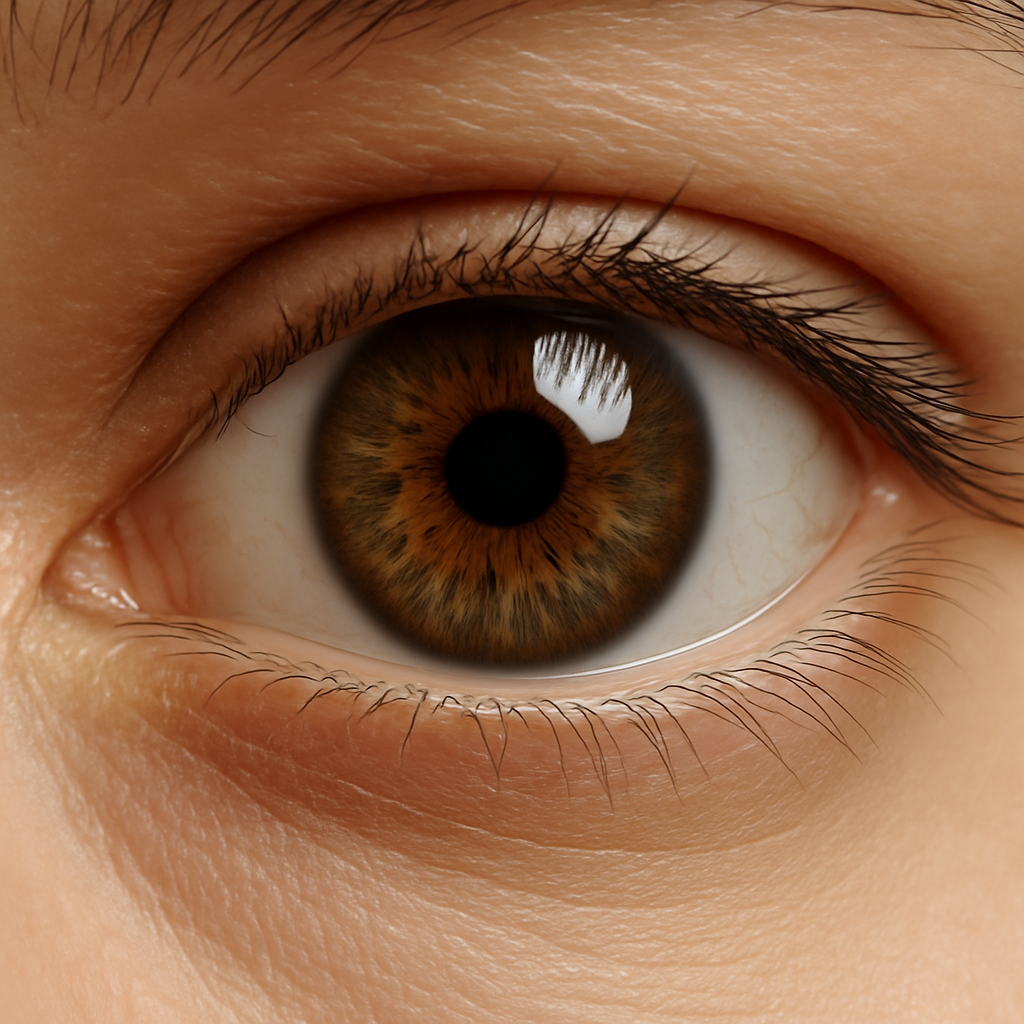The eye is composed of several key parts, each with a distinct function:
-
Cornea: The transparent front layer of the eye that bends incoming light to help focus it.
-
Pupil and Iris: The iris is the colored part of the eye that controls the size of the pupil—the dark circular opening that adjusts to let in more or less light.
-
Lens: Located behind the iris, the lens fine-tunes the focus, directing light onto the retina.
-
Retina: A thin layer of tissue at the back of the eye that contains photoreceptor cells (rods and cones). These cells convert light into electrical signals.
-
Optic Nerve: Transmits the visual information from the retina to the brain, where it is processed into images.
How Vision Works
Light enters the eye through the cornea and passes through the pupil, whose size is regulated by the iris. The lens then focuses the light onto the retina, where it is detected by photoreceptors. Rods are responsible for black-and-white vision and low-light conditions, while cones detect color and fine detail. The signals from these cells are sent via the optic nerve to the brain’s visual cortex.
Eye Color and Genetics
Eye color is determined by the amount and type of pigment in the iris. Brown eyes have more melanin, while blue and green eyes have less. Genetics plays a major role in determining eye color, with several genes involved in the process.
Common Eye Conditions
Several issues can affect eye health:
-
Myopia (nearsightedness) and Hyperopia (farsightedness): Refractive errors caused by the shape of the eye, leading to blurred vision.
-
Astigmatism: Irregular curvature of the cornea or lens causing distorted images.
-
Cataracts: Clouding of the lens, usually due to aging.
-
Glaucoma: Damage to the optic nerve often caused by high eye pressure.
-
Macular Degeneration: Deterioration of the central part of the retina, leading to vision loss.
Keeping Eyes Healthy
To protect and maintain good eye health:
-
Eat a balanced diet rich in vitamins A, C, and E.
-
Take regular breaks from screens to reduce eye strain.
-
Wear sunglasses to block harmful UV rays.
-
Get regular eye exams, especially after age 40.
Conclusion
The human eye is not just a passive receiver of light; it is a complex biological system that allows us to experience and interact with the world. By understanding how the eyes work and taking care of them, we can preserve our vision for a lifetime.
ramin
Fashion Editor at 416 Optical

